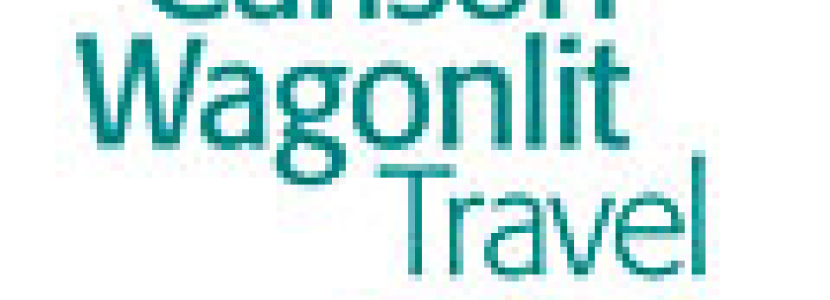
The results of the latest in-depth report released by the CWT Travel Management Institute, the research unit of Carlson Wagonlit Travel (CWT), the global leader in business tourism management, show that organizations implementing best practices can increase the impact of meetings and events while saving 10-25% over three years on average. The study Meetings and Events: Where Savings Meet Success was conducted in collaboration with StarCite, CWT's M&E technology partner.
Based on market and survey data, CWT estimates that M&E spend represents 0.5-1.5% of an organization’s revenues on average, varying between industries, or 35-60% of the amount spent separately on transient business travel.
Despite this high level of M&E spend, many companies do not have an M&E strategy, or policies or the necessary procedures in place for optimizing spend and focusing on their commercial objectives. The study identifies eight steps that organizations can take to maximize M&E management:
- Analyze spend and set up the right M&E organization. Even a rough estimate of global M&E spend can convince top executives to explore opportunities for increased return on investment. To lay the foundations for effective M&E management, CWT recommends first estimating annual M&E spend and implementing processes to capture and track data. If comprehensive data is unavailable, companies can consider spend as a percentage of revenues, depending on their industry, or extrapolate total M&E spend from their budgets for events. (CWT estimates that events account for approximately 75 percent of a company’s total M&E spend, as shown in Figure 1.) Companies should also centralize M&E management, outsource M&E activities and involve procurement experts in the decision-making process.
- Design an M&E strategy and policy. Companies should draw up a strategy based on the different categories of meetings and events, defining strategic objectives, supplier management, processes and policy. Their M&E policy should set precise rules for organizers of meetings and events. Although all the relevant stakeholders across an organization should be consulted to obtain input and buy-in, it is important to designate ownership of the policy to facilitate day-to-day management and promote compliance.
- Create an annual M&E budget and events calendar. Organizations should budget and plan M&E annually to make the best use of their resources. If comprehensive data is lacking, companies can estimate their global M&E budget based on their largest events, which represent the bulk of spend. Tracking these events in a centralized calendar can improve managers’ visibility of M&E activity, as well as provide benefits such as alerting organizers to the availability of cancelled meeting space that could be reused.
- Select and negotiate with suppliers. Working effectively with the right suppliers enables companies to leverage outside expertise while reducing costs. Many organizers work with preferred M&E agencies for large events, while the most mature also outsource the coordination of small meetings to logistics partners.
- Establish a formal planning process. A formal planning process is key to building a consistent meetings and events programme, maximizing compliance and ensuring M&E meet business objectives as well as satisfy attendees. CWT recommends five key steps: define objectives, establish a formal approval process, plan sufficiently in advance, choose a convenient destination and outsource coordination where necessary to leverage skills.
- Implement efficient attendee registration. Attendee management can be more efficient and convenient when manual processes are replaced by technology. Many companies use online registration tools that streamline processes for both M&E planners and attendees. In addition, organizations are increasingly using strategic meetings management tools that provide a more complete solution, supporting M&E processes, sourcing and spend management.
- Handle payment and reimbursement. An optimized payment and reconciliation process enables organizations to effectively manage data and maximize compliance with the M&E program. As procurement experts become increasingly involved in M&E, more companies worldwide will adopt the relevant best practices. These include paying as many supplier costs as possible, using a single mode of payment—preferably a corporate meeting card—and asking attendees to use their corporate credit cards for reimbursable expenses. Companies can also improve processes by using an automated expense management tool and deploying solutions provided by meetings technology providers to integrate payment card and reconciliation features. Finally, CWT advises companies to work with specialist suppliers to reclaim VAT.
- Evaluate M&E performance and policy compliance. Organizations need to consistently follow up on meetings and events to check they meet objectives and ensure ongoing improvements. In addition to monitoring attendee satisfaction, companies should track the satisfaction of other stakeholders, supplier performance and the value brought by M&E in terms of tangible and intangible benefits. Aggregate reporting and analysis of spend data across an entire organization provides benchmarking information that helps identify new savings opportunities and process improvements. It is important also to track compliance with M&E policy and the preferred supplier programme on a regular basis.
Christophe Renard, vice-chairman of marketing and corporate intelligence of CWT, explains that “Companies with a high-performing meeting and events programme do not seek savings at any price. Instead, they look for a real return on their investment. Their decisions are based on business objectives and they tend to involve stakeholders across the organization, including procurement, to ensure they are taking a balanced approach.”




